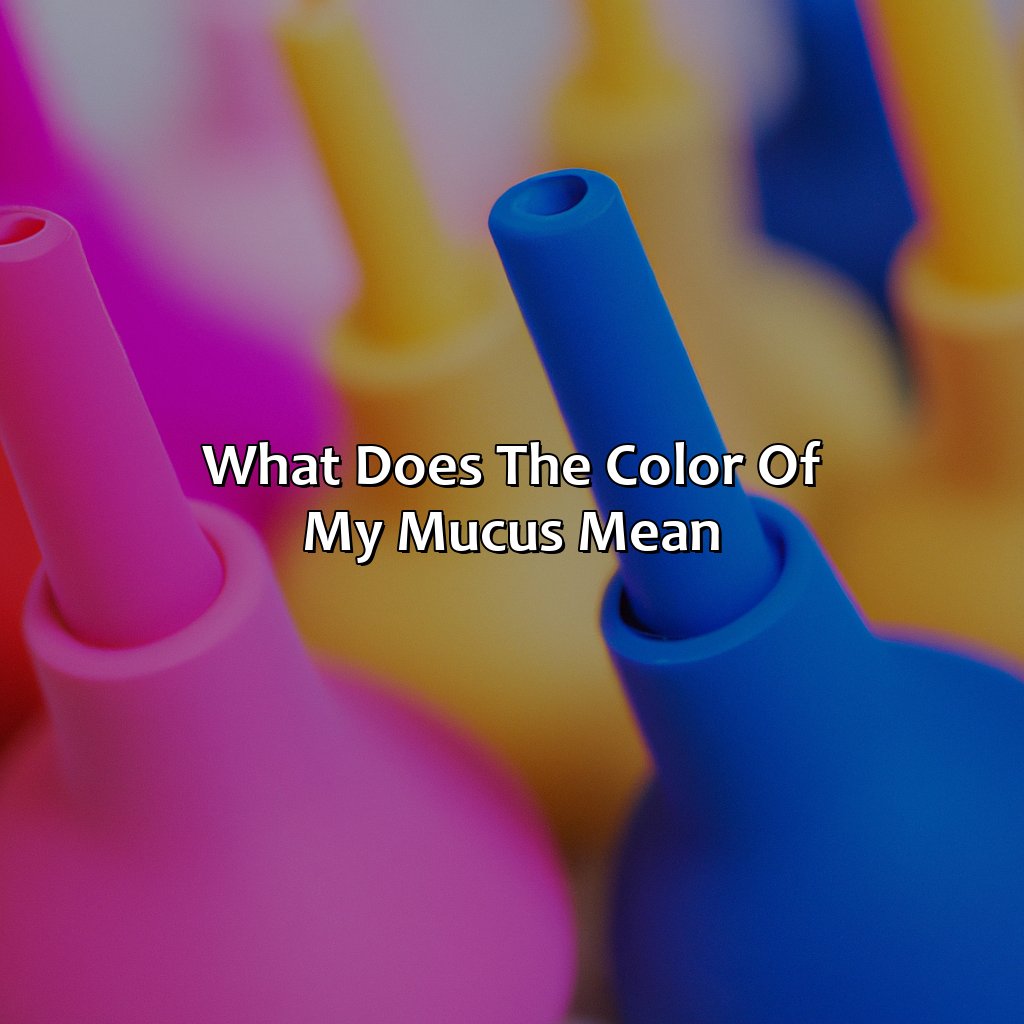Key Takeaway:
- Mucus can be a good indicator of respiratory health: Understanding the color and consistency of your mucus can help identify underlying conditions such as infections or allergies.
- Yellow mucus could indicate the presence of bacteria or infections: While it is usually a symptom of a viral infection, yellow mucus that persists for more than a week or is accompanied by a fever could indicate a bacterial infection such as sinusitis.
- Green mucus could indicate an inflammation or bacterial infection: Green mucus can be a sign of a bacterial infection such as bronchitis or even pneumonia. Seek medical attention if you have green mucus accompanied by a fever, shortness of breath, or chest pain.
- Brown or red mucus could indicate more severe respiratory conditions: Brown or red mucus could be a sign of chronic obstructive pulmonary disease (COPD) or exposure to air pollution or smoking. Seek medical attention if you have brown or red mucus accompanied by chest pain or difficulty breathing.
- Clear mucus is usually a sign of good respiratory health: Clear mucus is a normal part of respiratory function and helps to keep the airways moist. However, if you experience a sudden increase in clear mucus or it becomes thicker, it could be a sign of a respiratory infection such as sinusitis.
- Prevention is key to maintaining respiratory health: Practicing good hygiene, avoiding triggers such as cigarette smoke, and wearing face masks can help prevent respiratory infections and keep mucus production normal.
- Home remedies can be effective in managing respiratory conditions: Natural remedies like steam, humidifiers, and saline rinses can help to thin mucus and alleviate symptoms. Lifestyle changes such as exercise, stress reduction, and a healthy diet can also support respiratory health.
What is mucus?
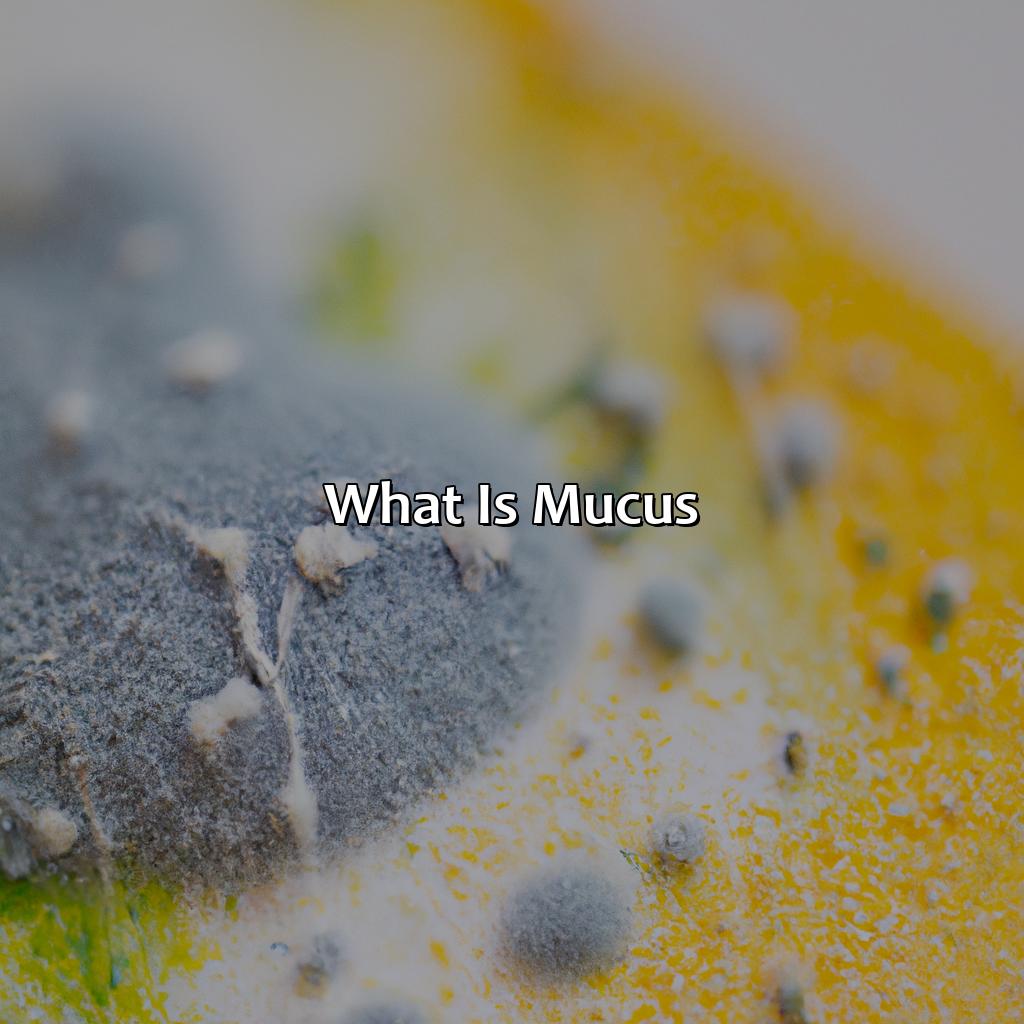
Photo Credits: colorscombo.com by Zachary King
Mucus is a viscous, slimy substance produced by the lining of various membranes in the body, including the sinuses, nose, and throat. It plays a crucial role in the respiratory system, serving as a sticky trap for bacteria, viruses, and other pollutants in the air. Phlegm, which is a type of mucus produced by the bronchial tubes, also helps to protect the lungs from infection. Nasal discharge is another form of mucus that helps to trap germs and prevent them from entering the body.
Why does mucus change color?
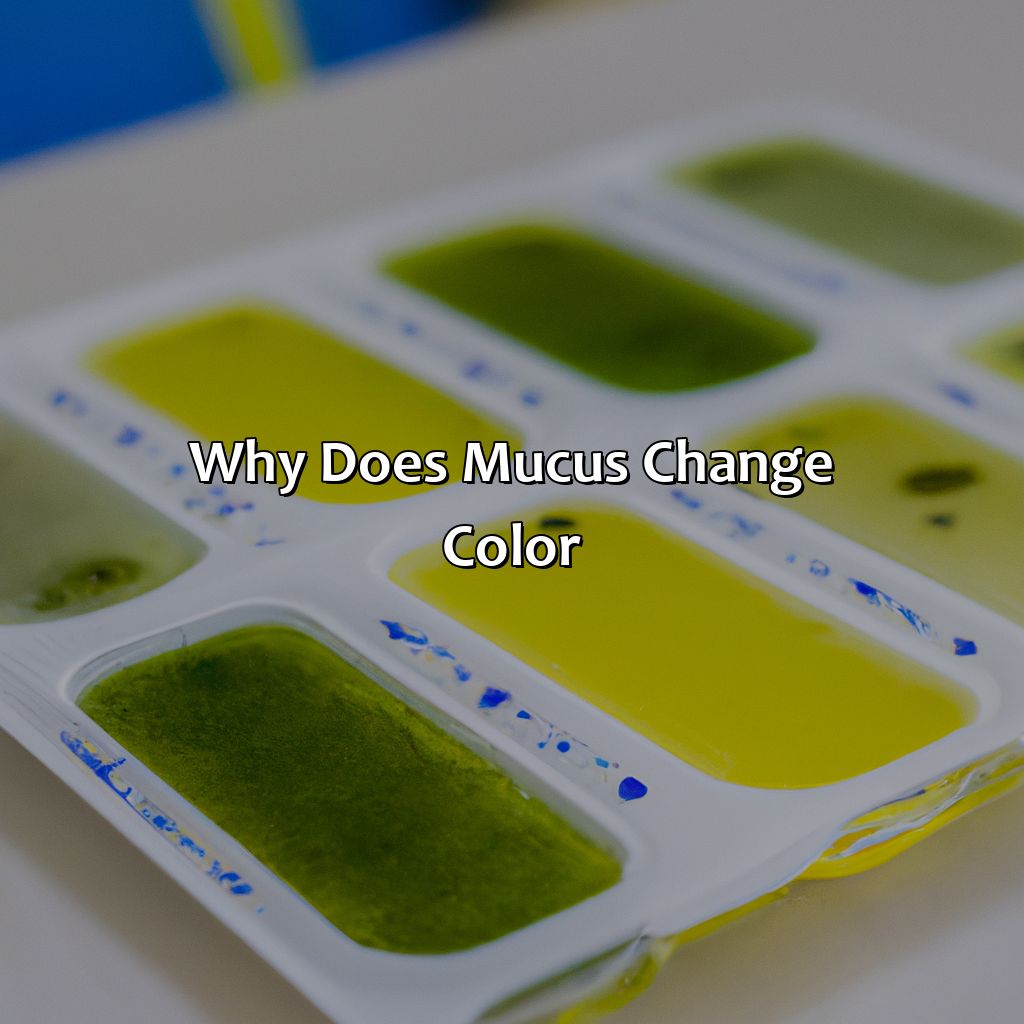
Photo Credits: colorscombo.com by Dylan Martin
The color of mucus can be affected by a variety of factors. It could be an indication of an underlying infection, a reaction to allergies or due to a change in the bacterial composition in the respiratory tract. Changes in the color of mucus from clear to yellow or green are commonly seen in individuals with respiratory infections. This is due to the presence of white blood cells and dead bacteria in the mucus. Factors such as air pollution, smoking, and certain medications can also impact the color of mucus.
In addition to infections and allergies, the color of mucus can also change due to dehydration and dry air. When the body is dehydrated, the mucus is thick and appears darker. Similarly, in dry environments, the mucus loses water content leading to darker shades. Individuals should monitor the color of their mucus as it could be a valuable indicator of their overall respiratory health.
One pro tip for maintaining respiratory health is to hydrate frequently by drinking water and using a humifier in dry environments. This can help prevent the mucus from becoming too thick and reduce chances of developing respiratory infections.
Yellow Mucus
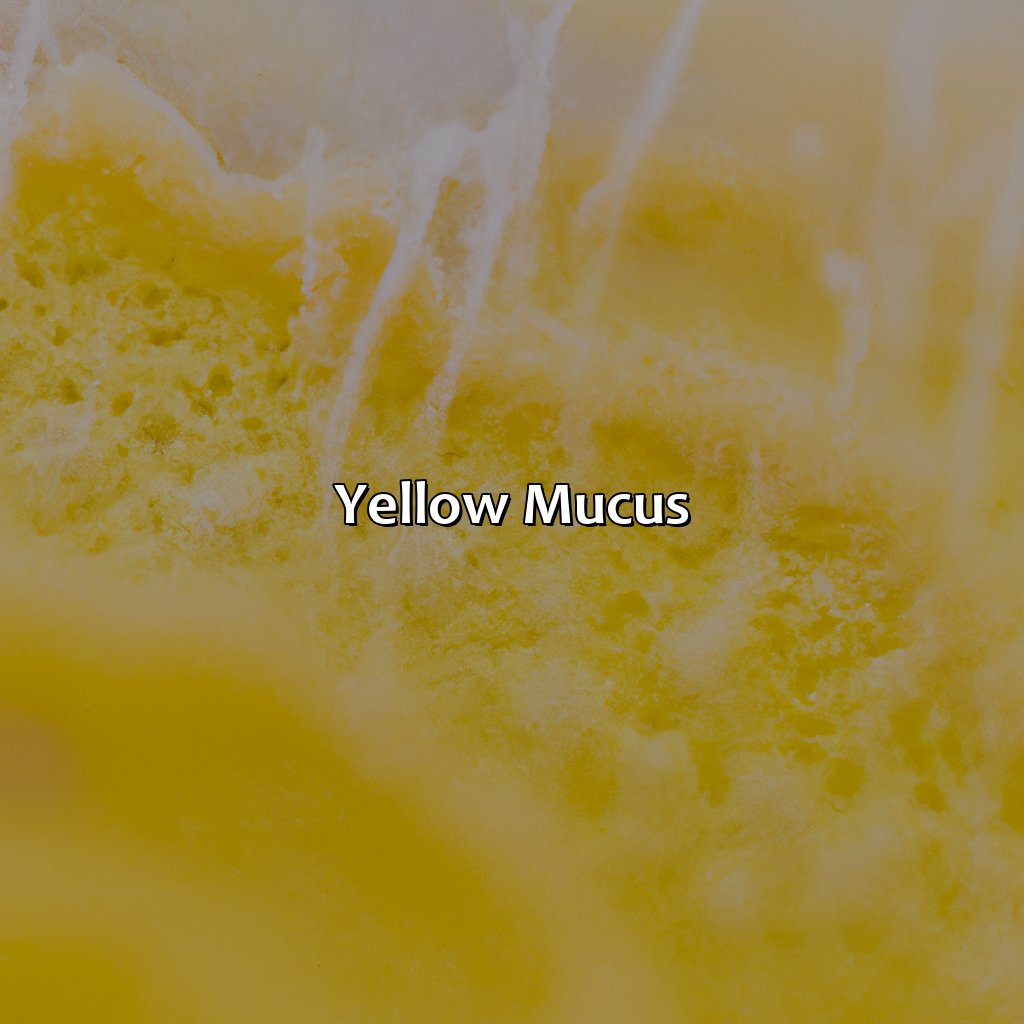
Photo Credits: colorscombo.com by Keith Sanchez
Why is your mucus yellow? To find out, you need to know what causes it. Common culprits are the flu, cold, cough, and sore throat. If you want to stay healthy and avoid viruses like pneumonia, it’s best to get medical help if your mucus is yellow.
Causes of yellow mucus
Mucus that appears yellow in color is often a sign of bacterial infection, which can be caused by flu, cold, cough, sore throat. Other causes include exposure to irritants such as cigarette smoke or air pollution. Additionally, excessive mucus production from allergic reactions can also result in yellow mucus. This irritant triggers an allergic reaction leading to the release of histamines that cause inflammation and production of excess mucus.
It is crucial to seek medical attention if yellow mucus is accompanied by other symptoms like fever, difficulty breathing or chest pain. This indicates severe respiratory infection or bacterial sinusitis that requires prompt treatment to prevent further complications.
It is essential to know that smoking or exposure to second-hand smoke can increase phlegm production resulting in yellow mucus. Smoking also damages the cilia lining the respiratory tract responsible for clearing mucus and dust particles from the airway leading to increased build-up of sticky infected mucus.
Yellow mucus may not make you feel sunny-side up; if you have a weakened immunity, it could be a sign of a virus or pneumonia.
When to seek medical attention for yellow mucus
If you have persistent yellow mucus, it could indicate an infection. Excess mucus is a sign that your body is trying to trap and eliminate foreign invaders, such as viruses and bacteria. However, yellow mucus can also be a sign of pneumonia. It is important to contact a healthcare professional if you experience fever, chest pain, or difficulty breathing along with the yellow mucus.
It is imperative to seek medical attention if your yellow mucus persists for more than ten days or if there is a visible change in the color of the discharge. Prolonged inflammation can lead to respiratory complications and compromise your immunity. Your healthcare provider may prescribe antibiotics to clear an infection or suggest other treatments depending on the underlying cause.
In severe cases, persistent yellow mucus could indicate lung cancer. Although unlikely, it is vital to rule out all possibilities by consulting with your physician as soon as possible.
A true history account revealed that a patient’s persistent yellow mucus led to a cancer diagnosis after multiple visits with healthcare professionals who treated her symptoms without testing for cancer until several months later. Therefore, do not hesitate to request additional testing or referrals if you feel that your healthcare needs are not being adequately met.
Green mucus: Because nothing says ‘I’m sick’ like the color of Kermit the Frog after a bender.
Green Mucus

Photo Credits: colorscombo.com by Henry Martin
Let’s investigate what green mucus means. It can show inflammation or a flu. Bacteria, infections, and allergies are all possible causes. Seek a doctor if you have bronchitis, laryngitis, or asthma. That’s when it’s time to get professional assistance.
Causes of green mucus
Green mucus is typically caused by an infection, either viral or bacterial. These infections can be brought on by allergies or other irritants, such as smoking. The green color of the mucus comes from the white blood cells that are trying to fight off the infection.
In addition to infections and allergies, certain medications may also cause green mucus production. It is important to note that if you have been experiencing green mucus for an extended period of time and have not sought medical attention, it could be indicative of a more severe underlying condition.
It is also worth mentioning that in rare cases, green mucus can be a sign of a more serious illness such as tuberculosis or cystic fibrosis.
Historically, ancient Greeks believed that anything green was poisonous and would cause death if ingested. While we now know this isn’t true, it is interesting to see how far our understanding of the human body has come over the millennia.
Green mucus is nature’s way of telling you to cancel your karaoke session and see a doctor for possible bronchitis, laryngitis, or asthmatic symptoms.
When to seek medical attention for green mucus
Noticeable green mucus can indicate an infection in the respiratory system, such as bronchitis or laryngitis. Infections are often accompanied by symptoms such as coughing and fever. It is essential to seek medical attention when these symptoms continue for a prolonged time.
In some cases, green mucus occurs with asthmatic symptoms. If that is so, breathing may become unexpectedly difficult or shortness of breath may get worse. Seeking medical attention becomes even more critical in such situations.
It is imperative to take care of oneself during these times and avoid unnecessary exposure to people who could be at risk of contracting the infection, either bacterial or viral.
There are many causes for green mucus besides infection like allergies and injuries to the nasal area that should also be screened by a doctor to have proper guidance on treatment options.
Your mucus is trying to tell you something, and it’s not just ‘I need a tissue’.
Brown or Red Mucus
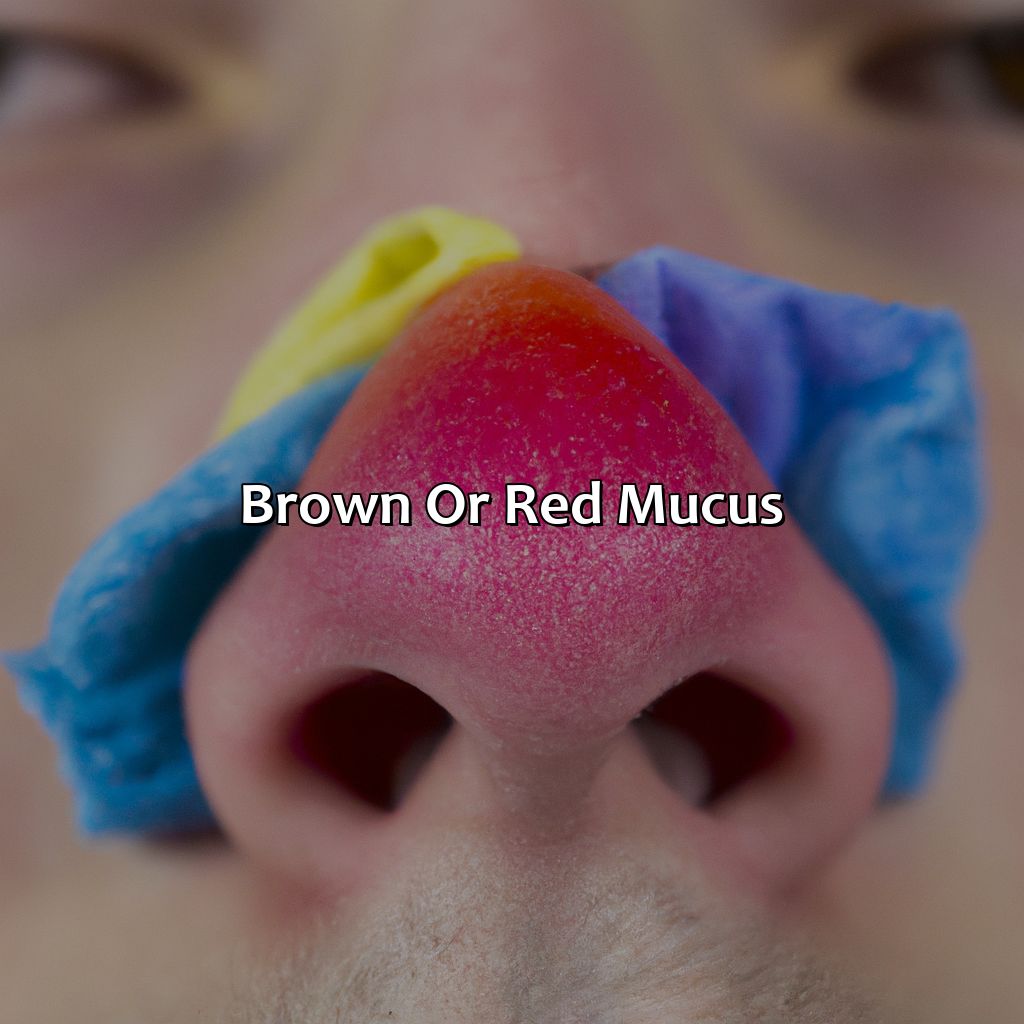
Photo Credits: colorscombo.com by Ralph Allen
To tackle the problem of brown or red mucus in your lungs and aiming to improve immunity, let’s look at possible causes. We’ll focus on COPD, air pollution, and smoking effects on mucus color. Plus, we’ll discuss warnings of pneumonia or bronchitis.
Causes of brown or red mucus
The discoloration of mucus may be a sign of an underlying condition. Brown or red mucus is caused by the presence of blood in it. Blood can be due to various reasons such as respiratory infections, nosebleeds, allergies, trauma or COPD. Smoking and exposure to air pollution also contribute to the occurrence of brown or red mucus. This type of mucus indicates an issue that requires immediate attention from a healthcare professional before it escalates.
Furthermore, individuals who have a history of heavy smoking or are constantly exposed to environmental pollutants should seek medical help sooner rather than later. The presence of brown or red mucus signifies the possibility of serious respiratory conditions that need prompt intervention.
It is essential to note that bronchitis and COPD are respiratory illnesses that could cause brown or red phlegm because they damage the lungs’ tiny air passages and lead to bleeding in the bronchi. According to research conducted by Dr Alex Bobak et al., “Air pollution cuts three years off life expectancy for every Delhi resident.” Therefore, it is crucial to watch out for any changes in one’s respiratory health and seek medical aid promptly for prompt diagnosis and treatment.
Red mucus? Might wanna skip the Bloody Marys and head to the doctor instead. Could be pneumonia or bronchitis.
When to seek medical attention for brown or red mucus
If you notice brown or red mucus, it may indicate a serious health issue. This color can be caused by blood in the mucus, which can be a result of pneumonia or bronchitis. Seeking medical attention is necessary if this occurs to ensure proper treatment and recovery. Don’t ignore it as there could be underlying conditions causing this coloration.
In addition to the possible presence of pneumonia or bronchitis, other causes of brown or red mucus include smoking, viral infections, and nasal polyps. It’s important to monitor your symptoms and seek medical attention promptly if you have any concerns about your health.
Remember that seeking medical help for brown or red mucus doesn’t necessarily mean you’re overreacting. Rather, it’s essential to get checked out early so that any underlying causes can be identified and treated promptly.
Studies show that lung cancer is one of the most prevalent causes of blood in sputum or phlegm.
Clear mucus may seem innocent, but it’s a sign your respiratory system might be up to some sneaky business.
Clear Mucus

Photo Credits: colorscombo.com by Jason Jackson
To be aware of the reasons and risks of clear mucus for your respiratory health, there are two parts to consider:
- Causes such as allergies, virus and cold.
- Knowing when to ask for medical help in case of sinusitis or congestion.
Causes of clear mucus
Clear mucus is typically a sign of a mild respiratory infection caused by allergies, a virus, or a cold. Environmental factors such as pollution can also cause clear mucus. It can be normal to have this type of mucus throughout the day, as it helps to keep the airways moist and healthy. Alleviating symptoms with over-the-counter drugs or natural remedies may be helpful in managing discomfort.
One way that clear mucus can be caused is by an increased production of histamine in response to allergens such as pollen or dust. The body then produces moisture in the lining of the respiratory tract, leading to runny nasal secretions. A viral or bacterial infection can also lead to clear mucus as the body fights off the foreign invaders.
It is important to note that if clear mucus persists for more than 10 days, it could be a sign of a more serious condition like sinusitis or bronchitis. Seeking medical attention would be recommended in these circumstances.
If you are experiencing symptoms such as difficulty breathing, chest pain or pressure, or severe headaches, seek medical attention immediately. These could be indications of something more severe and require urgent intervention.
Clear mucus is like a ninja, hiding sinusitis and congestion until it’s too late to seek medical attention.
When to seek medical attention for clear mucus
Clear mucus can be a sign of healthy respiratory function, but it can also be an indication of early sinusitis or congestion. If you notice excessive clear mucus, seek medical attention to rule out any underlying issues with your respiratory system.
It is advisable to consult a medical professional if you experience additional symptoms such as coughing, wheezing, shortness of breath, and fever. These symptoms may indicate the presence of an infection or inflammation in your respiratory tract.
Additionally, staying hydrated and using a saline nasal spray can help counteract potential sinusitis or congestion. Drinking enough water and getting sufficient rest can also boost your immune system and help keep your respiratory system healthy.
Remember, the color of your mucus may be gross, but it’s a good indicator of your respiratory health and when it’s time to break out the home remedies.
Prevention
To prevent mucus changing color, proper hygiene practices like regular hand washing and wearing a face mask can be adopted. Avoiding triggers like smog, smoke, and certain foods might also help in preventing color change. Keeping the environment clean and sanitizing surfaces may also prevent the build-up of bacteria, infection or allergies that could lead to mucus discoloration.
Besides adopting these preventive measures, seeking medical attention when experiencing prolonged mucus discolouration or any other related symptoms is highly advised.
Pro Tip: Maintaining hydration levels by taking enough water and fluids has been known to effectively manage mucus production while keeping it in check.
Treatments for mucus can range from popping a pill to going under the knife, depending on how much you hate your sinuses.
Treatments
Treating Conditions Related to Mucus
Mucus-related conditions may require various forms of medical interventions based on the diagnosis and severity of symptoms. Medications such as decongestants, antihistamines, or nasal steroids can help alleviate mild symptoms. Antibiotics or antivirals may be effective for treating bacterial infections. In severe cases, surgery may be necessary to address chronic sinusitis or structural abnormalities.
Additionally, lifestyle changes like staying hydrated, using a humidifier, avoiding irritants like cigarette smoke or allergens, and regular exercise can assist in reducing mucus-related symptoms. Patients should consult a healthcare provider before taking any over-the-counter medications or implementing dietary changes.
It’s crucial to note that self-medicating with non-prescription drugs may not provide complete relief from mucus-related issues and could also lead to side-effects. A combination of medication and lifestyle alterations may produce the most favorable outcome for patients.
In history, treatments for mucus-related disorders have evolved immensely throughout time. Furthermore, ancient Egyptians used frankincense and myrrh oils to treat coughs associated with phlegm buildup. The Greeks would opt for medicinal plants with soothing properties like mullein flowers and thyme to improve respiratory health. Analogous remedies are still utilized today alongside proven modern treatments developed through clinical research.
You can try these natural remedies at home, or you can just let your mucus color coordinate with your decor.
Home remedies
To alleviate symptoms of mucus, there are natural remedies that can be implemented. These remedies can help provide some relief and can also strengthen the immune system to prevent future mucus buildup.
- Steam: Steam inhalation helps in loosening the mucus, clearing nasal passages and easing sinus headaches.
- Humidifier: Using a humidifier or vaporizer keeps the air moist which in turn reduces irritation of delicate tissues of sinuses.
- Saline rinse: Saline rinses help clear out excess mucus, allergens, and bacteria from the nose reducing inflammation.
- Immune boosters: Certain vitamins such as vitamin C, zinc, and probiotics have been linked to improve immune health which indirectly decreases sinus infections.
It is essential to note that not all home remedies work for everyone. It’s best to test these remedies safely under medical supervision or constantly re-evaluating them with the advice of your doctor.
Moreover, it’s important to note that using natural remedies as a first aid solution will not guarantee resolution of chronic sinus issues and seeking medical attention may be imperative if symptoms do not subside within 3 weeks.
One interesting piece of history notes that in ancient Ayurvedic medicine, turmeric has been recognized for its potential therapeutic capacity. Arguably numerous health professionals suggest adding turmeric as an ingredient for natural home remedy concoctions due to its antiseptic properties.
Why bother changing your lifestyle when you can just blame your colorful mucus on the weather?
Lifestyle changes
Adopting healthy habits can affect the consistency and color of mucus. Emphasizing a well-balanced diet that includes fresh fruits and vegetables can boost the body’s immunity. Regular exercise enhances cardiovascular health, which improves lung function and aids in reducing mucus production. Quality rest is also advised as sufficient sleep represents an essential aspect of good health. Stress reduction techniques such as deep breathing and meditation can also help the body relax, which in turn reduces mucus production.
Incorporating such lifestyle changes can bring positive results to your overall health condition while mitigating issues related to mucus accumulation in the respiratory tract. Why waste money on essential oils and acupuncture when a good laugh can clear out your mucus?
Alternative therapies
As an alternative to traditional medication, individuals can explore holistic remedies such as essential oils, acupuncture, yoga, and meditation.
These therapies promote relaxation and overall wellness by reducing stress levels in the body. Essential oils are often used topically or aromatically to relieve respiratory and immune system issues. Acupuncture, a form of Traditional Chinese Medicine, involves the insertion of needles to encourage healing and balance within the body. Yoga and meditation practices focus on mindfulness and breathing techniques that aid in reducing anxiety and promoting mental clarity.
Don’t miss out on the benefits these Complementary and Alternative Medicine options offer for symptom relief.
Get tested for allergies so you can finally blame your runny nose on something other than your ex’s Spotify playlist.
Allergy testing
Allergy Diagnosis through Medical Examinations
Medical examination for allergic reactions can determine the source of allergens activating an immune system response to produce symptoms. Skin-prick or intradermal tests, blood tests (immunoglobulin E), and elimination diet are among the available testing methods.
Usually, doctors perform a complete medical history review and physical examination before conducting allergy testing. It helps rule out other potential sources of pain and symptom causes like infection or injury.
Immunotherapy treatment involves controlled exposure to altered allergens over time to reduce allergic reactions progressively. It may involve regular appointments combined with allergy shots or sublingual tablets.
Pro Tip: Do not take antihistamines before allergy testing, as it might result in false negative reports.
Healthy habits
Creating a healthy routine that promotes hygiene and sanitizing is essential in preventing mucus from changing color due to seasonal changes. This includes regularly washing hands, wearing masks, and practicing social distancing to prevent the spread of viruses and bacteria. Maintaining a clean environment, especially where there is increased exposure to allergens such as pollen or dust, can also minimize the production of excess mucus.
To further promote healthy habits for maintaining clear mucus, staying hydrated by drinking plenty of water can help prevent thickening and congestion in the respiratory system. Additionally, avoiding known irritants such as cigarette smoke or air pollution can decrease inflammation in the respiratory system, reducing mucus production.
It is important to note that while healthy habits can prevent excessive mucus buildup, sudden changes in color or consistency should not be ignored. Seeking medical attention when experiencing yellow or green mucus with accompanying symptoms such as chest pain or difficulty breathing may indicate an underlying infection or respiratory illness.
A true fact according to Medical News Today is that certain foods such as spicy foods, dairy products, and sugary drinks may exacerbate mucus production in some individuals.
Five Facts About What Does the Color of My Mucus Mean:
- ✅ Mucus that is clear or light-colored indicates normal respiratory function. (Source: Healthline)
- ✅ Yellow or green mucus may indicate a bacterial infection and warrants medical attention. (Source: WebMD)
- ✅ Brown or red mucus may be caused by exposure to pollutants or smoking. (Source: Medical News Today)
- ✅ Black mucus may be a sign of a fungal infection or inhaling substances like coal dust, and should be evaluated by a healthcare provider. (Source: Medical News Today)
- ✅ Mucus that is consistently thick and discolored may be a sign of chronic respiratory conditions like bronchitis or asthma. (Source: Mayo Clinic)
FAQs about What Does The Color Of My Mucus Mean
What does the color of my mucus mean?
The color of your mucus can provide important clues about your health. Every individual’s mucus secretion varies, but here are some general explanations of what different mucus colors mean:
What does yellow mucus indicate?
Yellow mucus usually indicates that your body is fighting off a mild infection, such as a cold or allergies. The yellow coloration is due to the presence of white blood cells, which help fight off infection.
What does green mucus indicate?
Green mucus generally indicates a more severe infection, such as bronchitis or sinusitis. The green coloration is caused by the presence of a pigment called myeloperoxidase, which is produced by certain types of white blood cells.
What does clear mucus indicate?
Clear mucus is generally a sign of healthy nasal and respiratory function. It means that your body is effectively trapping and removing dirt, dust, and harmful particles that you inhale.
What does brown mucus indicate?
Brown mucus could indicate exposure to environmental irritants such as tobacco smoke or dust. It can also indicate old blood in the mucus which might signify a sinus infection.
When should I see a doctor regarding the color of my mucus?
If you have concerns about the color or consistency of your mucus, particularly when it persists for more than a week or two, it is best to seek professional medical attention. Additionally, if you are experiencing other symptoms such as fever, difficulty breathing, or chest pain, it’s critical to make an appointment with your doctor immediately.
